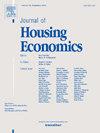加州的灾难性火灾、人类流离失所和房地产价格
IF 2.4
3区 经济学
Q3 ECONOMICS
引用次数: 0
摘要
每年都有数百万人因自然灾害而流离失所,但人们对撤离者如何影响收容社区却知之甚少。我们分析了加州历史上破坏性最大的火灾--2018 年坎普大火(Camp Fire)的迁移影响,这场大火摧毁了 18000 多座建筑,造成约 5 万人流离失所。通过将火灾足迹的地理空间信息与 Zillow 的房屋交易数据合并,我们估算了火灾在空间和时间上对房地产价格的影响。我们得出了一些重要结论。首先,在火灾发生后的六周内,火灾影响范围 25 英里内的房价上涨了 13%。随着距离的增加,影响逐渐减弱,超过 100 英里后,影响在统计上就不显著了。其次,火灾影响在火灾发生后两周内被发现,四周内完全显现,并持续十个月之久(这已超出了我们的考虑范围)。结果与疏散人员的搬迁决定一致,并且对各种规范和建模假设都是稳健的。本文章由计算机程序翻译,如有差异,请以英文原文为准。
Catastrophic fires, human displacement, and real estate prices in California
Millions of people are displaced by natural disasters each year, yet little is known about how evacuees affect host communities. We analyze the migratory effects of the most destructive fire in California history, the 2018 Camp Fire, which destroyed over 18,000 structures and displaced roughly 50,000 people. By merging geospatial information on the fire’s footprint with Zillow’s housing transaction data, we estimate both the spatial and temporal effects of the fire on real estate prices at a granular level. A number of important insights emerge. First, within 25 miles of the fire’s footprint, home prices increased by 13 percent in the six-week aftermath of the fire. Effects decay with distance and are statistically insignificant beyond 100 miles. Second, effects are detected within two weeks of the fire, fully materialize within four weeks, and are persistent up to ten months (which exhausts our period of consideration). Results are consistent with the relocation decisions of evacuees and are robust to a variety of specifications and modeling assumptions.
求助全文
通过发布文献求助,成功后即可免费获取论文全文。
去求助
来源期刊

Journal of Housing Economics
Multiple-
CiteScore
3.30
自引率
4.20%
发文量
35
期刊介绍:
The Journal of Housing Economics provides a focal point for the publication of economic research related to housing and encourages papers that bring to bear careful analytical technique on important housing-related questions. The journal covers the broad spectrum of topics and approaches that constitute housing economics, including analysis of important public policy issues.
 求助内容:
求助内容: 应助结果提醒方式:
应助结果提醒方式:


